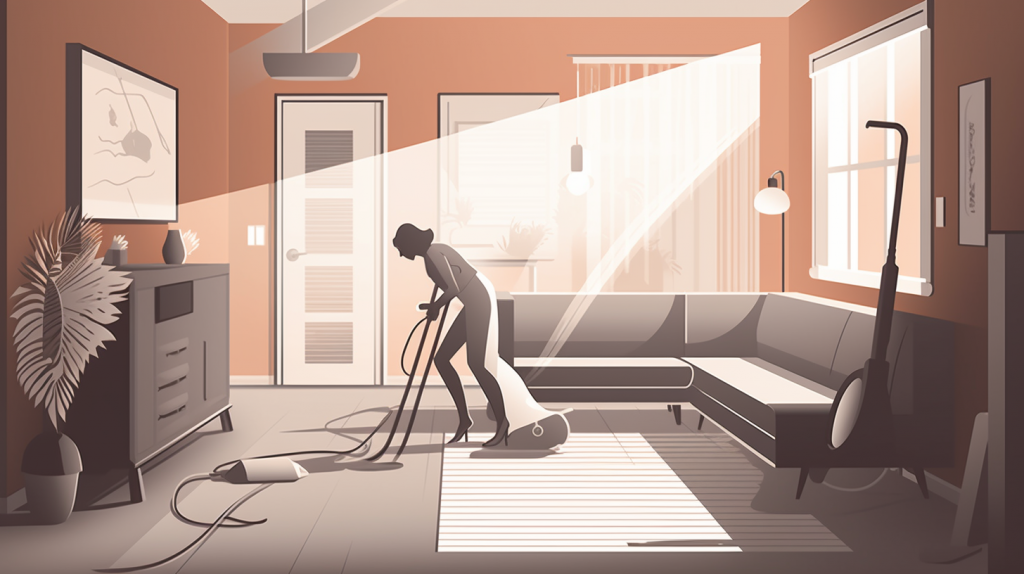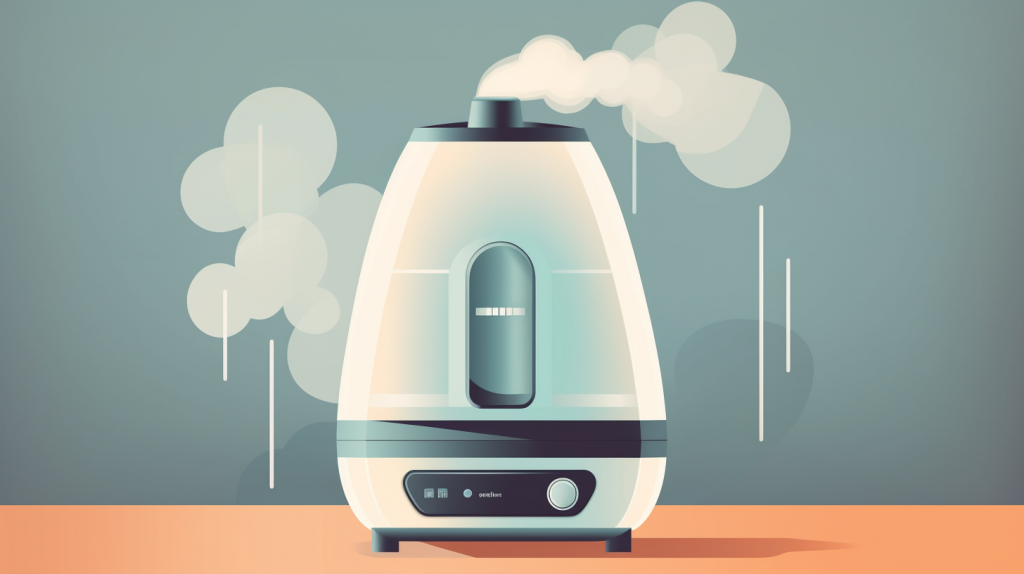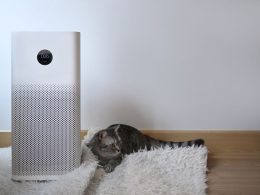Are you wondering why is my house so dusty, no matter how much I clean? Dust can be annoying and frustrating to deal with. It’s not just dust bunnies either; a lot of the dust in your house is made up of tiny particles from clothing fibers, pet dander, and even dead skin cells!
In this article, we’ll explore some of the causes of dust accumulation in the home and discuss strategies for reducing excess dust. We’ll also look at ways to measure the level of dust in a home and the advantages of keeping it low.
What does dust contain?
Dust is made up of many different particles, including pet dander, skin cells, hair, carpet fibers, lint from clothing and linens, and even insect parts. All of these particles are so small that they are invisible to the naked eye. Over time, these particles accumulate in the air and settle into surfaces in your home such as furniture, carpets, and curtains.
Causes of Dust Accumulation in the Home
Dust accumulation in the home can be caused by a variety of factors. One of the most common causes is a lack of regular cleaning. Dust builds up on surfaces that are not frequently cleaned, such as window ledges, behind furniture and beneath beds. Additionally, air vents and air filters can become clogged with dust, leading to an increase in dust circulating through the air.
Another common cause of dust accumulation is poor ventilation. Without adequate air circulation, dust particles remain in the air for longer periods of time, allowing them to settle into furniture and other surfaces. Poor ventilation can also lead to an increase in humidity levels which can further promote dust accumulation.
Why is my house so dusty?
Have you ever wondered why your house is so dusty despite cleaning it regularly? Dust accumulation is a common problem in every household, but it’s essential to understand the source of it. Let’s explore the six most common causes of household dust, including furniture upholstery, air conditioner and ducts, clothing fibers, pet dander, hardwood floors, and dead skin cells.
Furniture Upholstery and Carpet Fibers
Upholstered furniture and carpets are popular household items, but they can also be a major source of dust. These materials are prone to collecting dirt, pollen, pet dander, and other particles that can become airborne.
Vacuuming or sweeping these surfaces regularly will help reduce the amount of dust in your home. Be sure to vacuum or sweep under furniture and upholstered cushions as well. Additionally, it’s important to have upholstery professionally cleaned every few years in order to keep it free of dust and other allergens.
Air Conditioner and Leaky Ducts
Air conditioners and ducts are often overlooked as a source of dust in the home, but they can be a major contributor. Air conditioners and ducts can become clogged with dust, pollen, and other debris, leading to an increase in airborne particles.
Additionally, leaky ducts can allow dust to enter your home from outside sources. To reduce dust accumulation due to air conditioners and ducts, it’s important to change air filters regularly, check for leaks in the ductwork system, and have the entire system professionally cleaned if needed.
Clothing Fibers
Clothing Fibers are another common cause of dust accumulation in the home. Every time clothes are washed and dried, tiny fibers break off and become airborne. These fibers can settle on furniture, floors, and other surfaces, leading to dust buildup.
To reduce this particular type of dust, it’s important to clean lint traps after every load of laundry. Additionally, using a high-efficiency washer and dryer can help keep clothing fibers from becoming airborne. Finally, vacuum or sweep your floors regularly to remove any lingering clothing fibers that may have settled there.
Pet Dander
Pet dander is another common cause of dust accumulation in the home. Pet dander is made up of tiny particles that are shed from a pet’s fur, skin, and saliva. These particles are so small that they can easily become airborne and settle into furniture, carpets, curtains, and other surfaces.
Regularly grooming your pets can help reduce the amount of pet dander in your home. Additionally, cleaning floors with a damp mop or vacuum can help remove any pet dander that has settled onto surfaces. Finally, vacuuming furniture on a regular basis will also help reduce dust buildup due to pet dander.
Hardwood Floors
Hardwood floors are a popular flooring choice for many homes, but they can also be a major source of dust accumulation. Hardwood floors are porous and can absorb dust particles from the air, making them difficult to clean.
To reduce dust buildup on hardwood floors, it’s important to sweep or vacuum them regularly using a soft-bristled attachment. Additionally, cleaning with a damp mop is an effective way to remove any dust that has settled into the wood grain.
Finally, applying a floor finish or sealant every few years will help protect your hardwood floors from dirt and debris.
Dead Skin Cells
Dead skin cells are another common source of dust in the home. Every day, we shed millions of dead skin cells that can quickly accumulate on furniture, floors, and other surfaces.
To reduce this type of dust accumulation, it’s important to bathe regularly and keep your skin well moisturized. Additionally, vacuuming furniture and floors with a high-efficiency vacuum can help remove any dead skin cells that have settled into the fabric or floorboards.
Finally, investing in air purifiers is also an effective way to reduce the number of airborne particles in your home, including those from dead skin cells.
How to Measure the Level of Dust in a Home
Measuring the level of dust in your home is crucial to determining the effectiveness of your cleaning efforts and ensuring a healthy living environment. Moving on, we’ll cover two methods to measure dust levels in your home. These include dust particles counting methodology and air quality measurement equipment
Dust Particles Counting Methodology
Dust particles counting methodology is a method of measuring the amount of dust in a home. It involves using a handheld device to count the number of particles in the air. This method is often used by professionals to accurately measure indoor air quality and identify potential sources of dust.
To use this method, you’ll need to find an area of the home that has been recently vacuumed or dusted, as well as an area that has not been cleaned yet. Once both areas have been identified, use your handheld device to count the number of particles in each area.
The difference between the two readings will give you an accurate measurement of how much dust is present in your home.
Air Quality Measurement Equipment
Air quality measurement equipment is another method of measuring the level of dust in your home. This type of equipment typically comes in the form of an air monitor that can detect and measure a variety of airborne particles, including dust.
Air quality monitors provide an accurate reading of both indoor and outdoor air quality, allowing you to identify potential sources of dust accumulation. Additionally, some models feature real-time alerts that can notify you when the levels reach a certain threshold.
Finally, air quality measurement equipment can also be used to detect other pollutants such as mold spores, pollen, and smoke.
Strategies for Reducing Excess Dust in the House
Reducing excess dust in your home is important for maintaining a clean and healthy living environment, and there are a few strategies you can follow. These include regular cleaning with a vacuum cleaner and damp cloth, using an air filter or purifier, and sealing off any leaky ducts or holes around doors and windows
Regular Cleaning with Vacuum Cleaner and Damp Cloth

Regular cleaning with a vacuum cleaner and damp cloth is key to reducing dust in the home. Vacuuming can remove up to 90% of the dust particles in your house, while a damp cloth will help remove any stubborn dirt or debris that the vacuum may have missed.
When vacuuming, be sure to use an attachment with soft bristles to avoid scratching or damaging your floorboards. Additionally, be sure to empty the vacuum bag after each use to avoid recirculating dirt back into the air.
Use an Air Filter or Purifier to Trap More Dust Particles

Using an air filter or purifier is a great way to trap more dust particles in the home. Air filters work by trapping particles in their fibers, while air purifiers use ionization or ultraviolet light to eliminate airborne particles.
Both methods are effective at reducing the amount of dust present indoors and can help maintain a healthy living environment. When using an air filter, be sure to change it regularly according to the manufacturer’s instructions as dirty filters can release more dust into the air.
Seal Off Any Leaky Ducts or Holes Around Doors and Windows
Sealing off any leaky ducts or holes around doors and windows is another effective strategy for reducing dust in the home. Air leaks are a major source of dust accumulation, as they allow particles to enter the house from outside. To prevent this, make sure all exterior doors and windows fit tightly in their frames and seal any gaps or cracks with weatherstripping or caulk.
Additionally, check for any loose ductwork in your home and use insulation or metal tape to secure it tightly to the walls. Taking these steps can help reduce air leaks and keep dust levels at a minimum.
Advantages of Keeping a Low Level of Dust at Home
Having a low level of dust at home comes with many advantages. Here are some of them.
Improved Comfort Level in the House
Keeping a low level of dust in the home is essential for maintaining a comfortable living environment. Dust particles can accumulate on furniture, carpets, and other surfaces, leading to an uncomfortable feeling of grittiness when touched.
These particles can also be inhaled by residents and contribute to respiratory problems such as asthma and allergies. By keeping dust levels at a minimum, you can ensure that everyone in the house enjoys a comfortable level of cleanliness and air quality.
Less Allergy-Related Symptoms Caused by Airborne Dust Particles
Excess dust can lead to an increase in allergy-related symptoms caused by airborne particles. Dust mites, pollen, and pet dander are all common sources of allergies, and these particles can easily become airborne and enter the home through open windows or air vents.
As these particles accumulate on surfaces around the house, they can cause a variety of symptoms such as itchy eyes, runny nose, sneezing, coughing, and wheezing. The best way to reduce these symptoms is by keeping dust levels at a minimum and regularly cleaning surfaces with a damp cloth or vacuum cleaner.
Conclusion
In conclusion, reducing the amount of dust in your home is essential for creating a comfortable living environment and avoiding allergy-related symptoms. Regular cleaning with a vacuum cleaner can help remove up to 90% of the dust particles, while using an air filter or purifier can trap even more particles.
Sealing off any leaks around windows and doors also helps to reduce dust levels. Following these steps will not only create a healthier home, but it will also help keep your family feeling comfortable and free from allergy symptoms.










